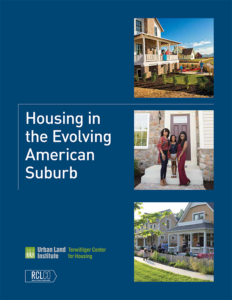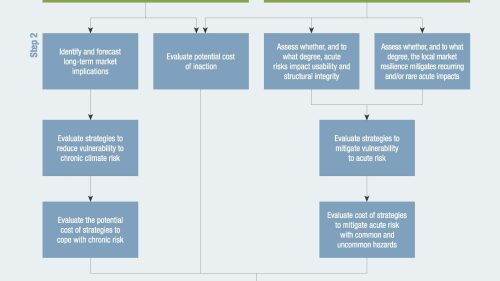U.S. suburban housing markets are well positioned to remain preferred places to live and work over the coming decades, even as many urban cores and downtown neighborhoods continue to attract new residents and businesses, says a new report from the ULI Terwilliger Center.
 Suburbs are not monolithic, according to the report, titled Housing in the Evolving American Suburb, which is based on a new analytic framework for classifying suburbs developed by RCLCO. The report classifies and compares suburbs in the 50 largest metropolitan areas in the United States and assesses the key issues that will shape suburban residential demand and development in the years ahead. The work shows significant differences between cities and suburbs, as well as a wide variety of types of suburbs, in terms of their housing characteristics and conditions. These differences are likely to substantially influence future residential demand and development in every major market in the United States. Among the report’s key findings:
Suburbs are not monolithic, according to the report, titled Housing in the Evolving American Suburb, which is based on a new analytic framework for classifying suburbs developed by RCLCO. The report classifies and compares suburbs in the 50 largest metropolitan areas in the United States and assesses the key issues that will shape suburban residential demand and development in the years ahead. The work shows significant differences between cities and suburbs, as well as a wide variety of types of suburbs, in terms of their housing characteristics and conditions. These differences are likely to substantially influence future residential demand and development in every major market in the United States. Among the report’s key findings:
- The United States remains a largely suburban nation. In America’s 50 largest (and most urbanized) metropolitan areas, suburbs account for 79 percent of the population, 78 percent of the households, 32 percent of the land area, and—of particular noteworthiness—75 percent of the young adults aged 25 to 35.
- Suburban growth has driven recent metropolitan growth. From 2000 to 2015, suburban areas accounted for 91 percent of U.S. population growth and 84 percent of household growth in the top 50 metro areas.
- A large majority of Americans work in suburbs, although job growth has been more balanced recently. As of 2014, 67.5 percent of the employment in the 50 largest U.S. metro areas was in the suburbs. Between 2005 and 2010, employment in suburban areas remained stagnant, but it increased by 8.2 percent in urban areas. But between 2010 and 2014, jobs increased by 9 percent in suburbs versus 6 percent in urban areas.
- U.S. suburbs as a whole are racially and ethnically diverse. Seventy-six percent of the minority populations in the top 50 U.S. metro areas lives in the suburbs.
- The variety of types of suburbs creates a wide range of development opportunities. The report identifies development trends, issues, and innovative product examples in five distinct types of suburbs within the 50 largest metro areas: “Established High-End,” “Stable Middle-Income,” “Economically Challenged,” “Greenfield Lifestyle,” and “Greenfield Value.”
“Now is an opportune time to take a fresh look at American suburbs,” says Stockton Williams, executive director of the Terwilliger Center. “Suburban housing dynamics increasingly reflect some of the most profound issues shaping our society, including aging, immigration, economic mobility, and evolving consumer preferences. As a result, suburbs will generate substantial residential development and redevelopment opportunities and challenges in the years ahead.”
While the ascendancy of American suburbs starting after World War II came largely at the expense of cities, the recent revitalization of urban centers is in many cases complementary to the continued strength of their suburbs, Williams notes. “The appeal of different types of suburbs to different demographic and socioeconomic groups has important implications for real estate developers, capital markets players, and policy makers at all levels of government.”
The report points out that healthy regions and fully functioning housing markets require a range of housing choices for households of different backgrounds, means, desires, and stages of life. Some of these options, the analysis suggests, will reflect preferences among a growing number of Americans for denser, more walkable communities. Others will serve a strong continuing demand for new single-family homes in more traditional auto-oriented areas, particularly to the extent they can be provided more affordably and near jobs. Still others will, by both choice and necessity, offer lower-cost workforce housing—for rent as well as for sale.
Download PDF: Housing in the Evolving American Suburb
Trish Riggs is ULI senior vice president of communications.




